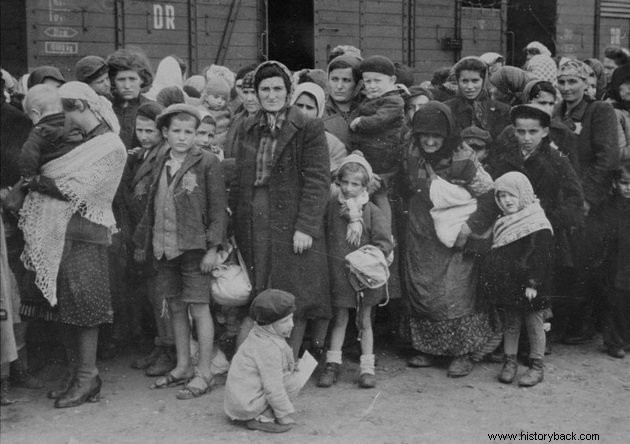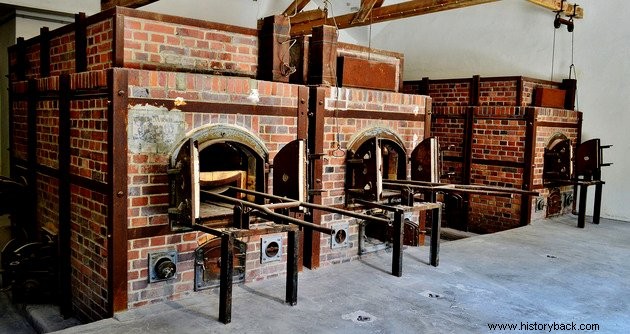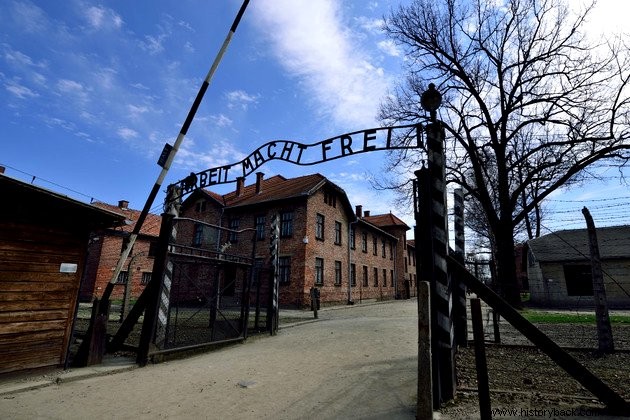The concentration camps were used by the Nazi regime to imprison thousands of people in the 30s and 40s.
At least 20,000 camps were used between 1933 and 1945, in Germany and in 12 other countries that were occupied by the Nazis before and during the period of World War II (1939-1945).
Origin of Fields
The concentration camps, initially, were used to receive political prisoners, such as socialists and communists.
The first to be built was Dachau, in 1933, near the city of Munich. Throughout the war, however, the number of concentration camps increased and each one had a specific function.
The camps were built in Austria, Belarus, Croatia, Estonia, France, Italy, Norway, the Netherlands, Poland, the Czech Republic and Ukraine.
Types of Concentration Camps
There were three types of camps:transit, forced labor, and extermination.
- Transit :served to concentrate a large number of prisoners - usually Jews - who would be transported to the death camps. They existed in greater numbers in the countries occupied by the Nazis. Examples:Drancy in France and Theresienstadt in the Czech Republic.
- Forced labor :prisoners were forced to work without rest and paid the bare minimum to survive. Examples:Bor in Serbia and Plazów in Poland.
- Extermination :where prisoners were directly sent to their death, in gas chambers. Only a few people survived and worked. Examples:Sobibor and Treblinka, Poland.
This did not mean that a forced labor camp could not be an extermination camp and vice versa. In all camps, including transit camps, mortality was high due to poor infrastructure.
See also:NazismExtermination Camps
Death camps were thought to physically eliminate Jews. This decision was called by the Nazis the final solution and was taken at the Wannsee Conference on January 20, 1942.
This is not to say that the Jews weren't being exterminated before, but from that date onwards, extermination was made official within the Third Reich and escalated to an industrial scale.
After Dachau, which operated for 12 years, six camps were opened for the purpose of mass extermination:Chelmno, Auschwitz-Bikernau, Belzec, Majdanek, Sobibor and Treblinka. All of these were located in Poland.
The construction of the first specific project for mass murder was Chelmno, in 1941. The following year, the rest were already in operation.
Deaths also occurred due to forced labor to which prisoners were subjected, as well as diseases, torture, hunger and cold. It is estimated that 11 million people died in Nazi concentration camps.
Prisoner Selection

The prisoners of the concentration camps were people deported from European territories occupied by the Nazis, especially the Jews.
There were, however, homosexuals, communists, gypsies and Jehovah's Witnesses, Soviet prisoners, Catholic priests, Protestant pastors, etc.
Regardless of origin, prisoners arriving at the concentration camps were carefully selected as they disembarked from freight trains.
They left all their belongings on the railway platform and those who appeared to be stronger and healthier were spared and loaded onto a truck. He would take them to the barracks, where they would have to do forced labor in factories.
Elderly people, women, the sick and children were loaded onto other trucks and taken directly to the gas chambers. There they were placed in a vestibule, where they were stripped of their clothes and immediately placed in the gas chambers in which they were killed by asphyxiation.
The work of selecting, collecting belongings and taking them to the gas chambers was done by the prisoners who formed the Sonderkommando detachment. (special command).
Prisoners Responsible:Meet the Sonderkommando
The Sonderkommando it was used in the Auschwitz, Treblinka, Birkenau, Belzec, Chelmno and Sobibor death camps. They were also responsible for guarding the Jewish ghettos.
They were groups of Jews in good health who were responsible for dealing with the prisoners, from their arrival at the camp to their transport to the gas chambers. After the murder, they had to remove the gold teeth from the corpses, cut their hair and take them to the crematory ovens.
The work took place under the supervision of the Nazis and, when the prisoners arrived, the members of the sonderkommando were forced to lie about their fate. Anyone who didn't obey orders was also eliminated.
The detachments had some privileges such as better food and they could get in touch with their families. However, many performed these tasks while under the influence of drugs.
Likewise, they were periodically changed and their fate was the same as their victims.
Examples of Kill Fields
Several death camps were built and became synonymous with horror and shame. We can mention Sobibor, in Poland and Buchenwald, in Germany, among many others.
However, two camps were particularly etched in the collective memory because of the atrocities committed there:Dachau and Auschwitz.
Dachau Field

The first of the concentration camps was established in Dachau, Germany, on March 22, 1933.
Dachau's second leader, the SS commander Theodor Eicke (1899-1945), elevated the place to a model for the treatment of prisoners. It was up to him to manage the complex system of Nazi concentration camps throughout World War II.
The place became known not only for being the destination of thousands of victims of the war, but because of the medical experiments carried out on human beings.
Experiments with Human Beings
Medical experiments are among the main hallmarks of the cruelty of Nazi concentration camps. Among other justifications for its accomplishment was the improvement of the survival rates of the German soldiers and the improvement of the knowledge of treatments and clinical procedures.
Many were painful, unnecessary and cruel, often leading to death. In the Dachau concentration camp, prisoners were subjected to pressure chambers, freezes to analyze hypothermia or forced to drink salt water to study the potability of the water.
There, research was also conducted using the detainees to develop vaccines against malaria and tuberculosis.
Auschwitz Camp

The largest and best known of the Nazi concentration camps was Auschwitz, where 1.1 million people were murdered. It included three major camps like the one at Birkenau for women and 45 sub-camps.
In Polish the name of the city is Oświęcim, but since 1939, when Germany invaded Poland, the place was renamed Auschwitz. It was built shortly after the German invasion and was initially intended for prisoners who opposed the Nazi regime in Polish lands.
Three kilometers away, the Nazis built another camp to receive Soviet prisoners. About 15,000 were at the scene and none survived. Subsequently, Auschwitz would be the final destination of thousands of Jews from all over Europe.
An interesting feature is that only in Auschwitz prisoners had a serial number tattooed on their arms.
Although it was the field where the most murders were carried out, it was also the place where there were the most survivors. Fortunately, they were able to tell what they experienced and witness to this horror.
See also:Auschwitz CampHolocaust
In concentration camps destined for extermination, the purpose was to implement the final solution, also called the Jewish holocaust.
This expression was created by American historians to designate the mass murder suffered by Jews. This is a controversial term, as holocaust refers to sacrifice to God .
An estimated six million Jews were murdered during this period either in gas chambers or by other methods such as starvation and disease.
See also:Holocaust:what it was and how it happened Read more :
- Anti-Semitism
- Adolf Hitler
- Eugenics
- Anne Frank
- Olga Benário Prestes
- Germany
- History's Greatest Dictators
- Consequences of World War II
